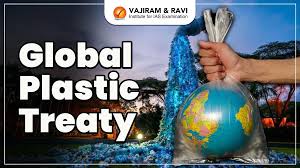“A new research-based framework lets companies make informed decisions balancing economic and sustainability factors when producing biochemicals”
If you make your bio-product 100% sustainable it may be way too expensive to produce. If you make it less environmentally friendly, you may, at some point, end up having a feasible product that can compete on market terms. But is it still sustainable? This balancing game is very real to lots of companies producing bio-chemicals; that is chemicals produced from biomass instead of petroleum which chemicals are conventionally made from.
Now, a group of scientists specializing in so-called techno-economic analysis (TEA) and life cycle assessments (LCAs) have come up with a framework to ease this balancing. The framework is important to make informed decisions, explains Adjunct and first author behind a recent study in Trends in Biotechnology, Ólafur Ögmundarson:
“By combining economic and environmental impacts in a monetary single score we can measure the trade-offs between these two indicators when assessing sustainability of biochemicals or biochemical processes. This is necessary, because biochemicals are not per default sustainable just because they are bio-based,” he says.
Ólafur Ögmundarson, now Adjunct at University of Iceland, is former Senior Sustainable-Innovation Manager at The Novo Nordisk Foundation Center for Biosustainability at DTU, where he and his DTU co-workers performed most of this research.
Shifting the burden
With this framework, research and development units — both at universities and companies — can assess the true sustainability of biochemicals and optimize the performance both from an environmental and an economic viewpoint.
Basically, the framework can be used to find hotspots, or especially problematic steps, in the production process and help the company shift the burden on the balance to find the golden spot where economy and sustainability outweigh each other.
“There is a lot to gain by applying both methodologies for a truly sustainable future, because we all need chemicals and their different applications. We just need them to be sustainable!”
Useful in early phase of development
This framework makes it possible to develop sustainable bio-chemicals by choosing the right biomass input, fermentation process, downstream processes etc. for a given bio-compound.
Without assessing both the environmental and economic sustainability from an early stage of development, companies may end up with some high-damage steps that could, or should, be eliminated.
“The framework might show that at an early stage of development it is possible to optimise a certain production step to get the highest return on investment and simultaneously cause the lowest environmental impacts. This framework is a way to assess the full impact of a product or process — not just looking at either economy or sustainability, which is unfortunately rather common today.”
Money talks
In order to make a TEA-LCA assessment and ending up with a monetary single score for a given bio-product, the researchers had to translate environmental impacts into a monetary value in order to compare economy and sustainability factors directly. This is imperative, Ólafur Ögmundarson explains:
“Let us take an example. A new molecule is being developed in a laboratory. It shows great market potential, and the economic indicator is, therefore, good. This is despite that a lot of energy, toxic chemicals and water are used in the production process. Because these inputs are cheap, they don’t have an impact on the economic indicator. But they have huge negative environmental impact. So, the environmental indicators have to be converted into money to count equally in the framework.”
The devil is in the detail
Unfortunately, this framework is not ‘plug-and-play’ to ordinary people and still require a lot of knowledge about TEA and LCA.
“To create an online tool for everyone to use would, of course, be ideal, but it is also not easy. The devil is in the detail. We need to know the estimated materials needed and energy inputs and outputs for the different process steps. So, based on the current setup of the framework, individual cases must be assessed independently.”
Going forward, the researchers hope to develop this framework further. This includes exploring other ways of monetizing environmental damages and expand which costs are included in the calculations.
“We need to find a way to include the social pillar of sustainability in the framework; worker’s rights, working conditions, salary etc. and we would welcome collaboration on developing the framework further. This applies to both researchers and companies,” he concludes.
Story Source:
Materials provided by Technical University of Denmark. Original written by Anne Wärme Lykke, Anders Østerby Mønsted. Note: Content may be edited for style and length.








Thank you for your sharing. I am worried that I lack creative ideas. It is your article that makes me full of hope. Thank you. But, I have a question, can you help me?
Your article helped me a lot, is there any more related content? Thanks!